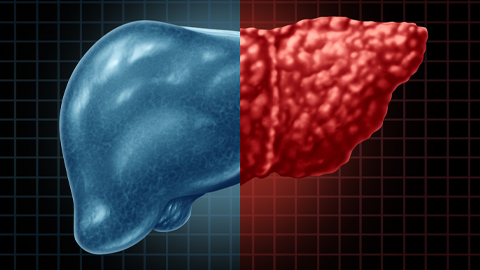JLR celebrates diamond jubilee
A diamond traditionally symbolizes a 60th anniversary, and this month, the Journal of Lipid Research marks 60 years with a sparkling collection of special review articles.
The JLR started as a quarterly journal in October 1959 in response to an explosion in methods and research in lipid biochemistry. It began publishing monthly in 1983, and in 2003 it joined the American Society for Biochemistry and Molecular Biology journals family.
Since its 50th anniversary, the JLR has sponsored lectures at meetings in the lipid biochemistry field. For the journal’s 60th anniversary, the editors invited each of the more than 50 researchers who have been recognized with these invited lectures to write an update on his or her area of research. While not all the scientists could participate, the 60th anniversary party is off to an exciting start with the first set of reviews.
 Each JLR perspective article features a graphical abstract that can be downloaded as a PowerPoint slide for teaching. This one is from a review on fatty acid binding protein 4 by Kacey Prentice and colleagues at Harvard University and Harvard School of Public Health.K. Prentice et al./JLR 2019
Each JLR perspective article features a graphical abstract that can be downloaded as a PowerPoint slide for teaching. This one is from a review on fatty acid binding protein 4 by Kacey Prentice and colleagues at Harvard University and Harvard School of Public Health.K. Prentice et al./JLR 2019
These articles touch on several broad themes in lipid science. They explain recent advances in well-known areas, such as the role of lipid storage in metabolic disorders, and also areas that may not be so familiar, such as transcellular biosynthesis of signaling molecules. Whatever your focus in lipid research, you’re sure to find something interesting. Here’s a quick overview of the articles published so far.
Lipids in immune signaling
Many diffusible signaling molecules that affect immune activity originally were components of the cell membrane. What’s more, hydrophobic molecules such as cholesterol can be recognized and promote inflammation.
- Leukotrienes are lipid signaling mediators that contribute to anaphylaxis and white blood cell traffic. The synthesis of a leukotriene from a membrane lipid sometimes requires several cells to chip in. Robert Murphy and Giancarlo Folco discuss how leukotriene synthesis is regulated in concert with other lipid metabolism pathways.
- Macrophages contribute to atherosclerosis, or blood vessel plaque formation, through inflammation. Alan Tall and Marit Westerterp review the hypotheses for how excess cholesterol can contribute to inflammatory signaling in macrophages and neutrophils.
- Sarah Spiegel and colleagues describe a transporter that moves sphingosine-1-phosphate, a lipid regulator of T and B cell activity, from within the cell where it’s made to outside the cell, where it is sensed by G protein-coupled receptors.
Lipids in metabolism and metabolic disorders
Energy storage in the form of triglycerides in adipocytes in lipid droplets is a basic building block of obesity — and it also plays into insulin resistance and other metabolic problems. Several articles discuss what we’ve learned in recent years about coordinating triglyceride formation.
- Rosalind Coleman describes how the enzymes that build triglycerides interact with other proteins to get these energy-storing lipids made — and used — at appropriate times.
- Phosphatidic acid phosphatases clip a phosphate group from phosphatidic acid to make a simpler backbone that can be built into triglycerides.
- Without communication between tissues, whole-body lipid metabolism never could be coordinated. Marcus Seldin and Aldons Lusis describe their work using systems genetics to investigate variability in how adiponectin from fat tissues is received in the liver.
Lipids in the development of rare diseases
 This graphical abstract is from a review by Gabor Tigyi and colleagues on the therapeutic potential of lysophosphatic acid type 2 receptor agonists.G. TIGYI ET AL./JLR 2019
This graphical abstract is from a review by Gabor Tigyi and colleagues on the therapeutic potential of lysophosphatic acid type 2 receptor agonists.G. TIGYI ET AL./JLR 2019
Two reviews highlight genetic disorders of sphingolipid metabolism. Sphingolipids are found in membranes, where they can act as receptors or regulate membrane protein activity; they also can work as signaling molecules after a little metabolic tweaking.
- In the past, many genetic diseases seemed unrelated, but as our understanding of sphingolipid synthesis and turnover improves, it has become clear that several are linked by disruptions to sphingolipid processing, Richard Proia and co-authors explain in their review.
- The latest genetic disorder of sphingolipids was discovered in 2017. Julie Saba describes the 50-year journey from the first description of a sphingolipid breakdown enzyme to the identification of a disease caused when it is disrupted.
Lipids in pharmaceutical science
Along with our emerging understanding of lipids’ roles in physiology have come advances in how scientists can modulate lipid-related signaling. Sometimes this means a new understanding for an old and familiar drug; other times it’s about targeting new signaling pathways.
- Niacin was the earliest drug for dyslipidemia. Johan Auwerx and colleagues review recent research suggesting a new mechanism of action to explain why it lowers blood triglycerides.
- Lysophosphatidic acid is a powerful antiapoptotic signal, but like many such signals, it also can promote tumor growth. Gabor Tigyi and colleagues describe their effort to develop an LPA mimic with less dramatic negative side effects.
- Finally, a review on inhibitors of the PI3 kinase pathway, a new class of drugs for cancer, highlights the importance of signaling that happens downstream of lipids. Lewis Cantley and coauthors write about how cancer cells evade PI3K inhibition and how to reduce that resistance.
Enjoy reading ASBMB Today?
Become a member to receive the print edition four times a year and the digital edition weekly.
Learn moreGet the latest from ASBMB Today
Enter your email address, and we’ll send you a weekly email with recent articles, interviews and more.
Latest in Science
Science highlights or most popular articles

Analyzing triglycerides in Americans of African ancestry
Using the All of Us database, researchers at Vanderbilt sought a genetic reason why some patients, often underrepresented in research, could have varying levels of fat in the bloodstream.

Of yeasts and men: One-hour proteomes, 10 years apart
To profile the human genome within an hour, the researchers used a new mass spectrometer and packed their liquid chromatography columns with very high pressure.

Cells have more mini ‘organs’ than researchers thought
Membraneless organelles, also called biomolecular condensates, are changing how scientists think about protein chemistry, various diseases and even the origin of life.

Institute launches a new AI initiative to power biological research
Stowers investigator Julia Zeitlinger selected to head effort and leverage cutting-edge computational techniques to accelerate scientific discoveries.

From the journals: JLR
Fixation method to quantify brain metabolites. Belly fat and liver disease crosstalk. Stopping heart diseases in schizophrenic patients. Read about the recent JLR papers on these topics.

Does a protein hold the key to Alzheimer’s?
Researchers in Maryland and Massachusetts team up to study how SORL1 promotes tau trafficking and seeding in cells that leads to the neurodegenerative disorder.

